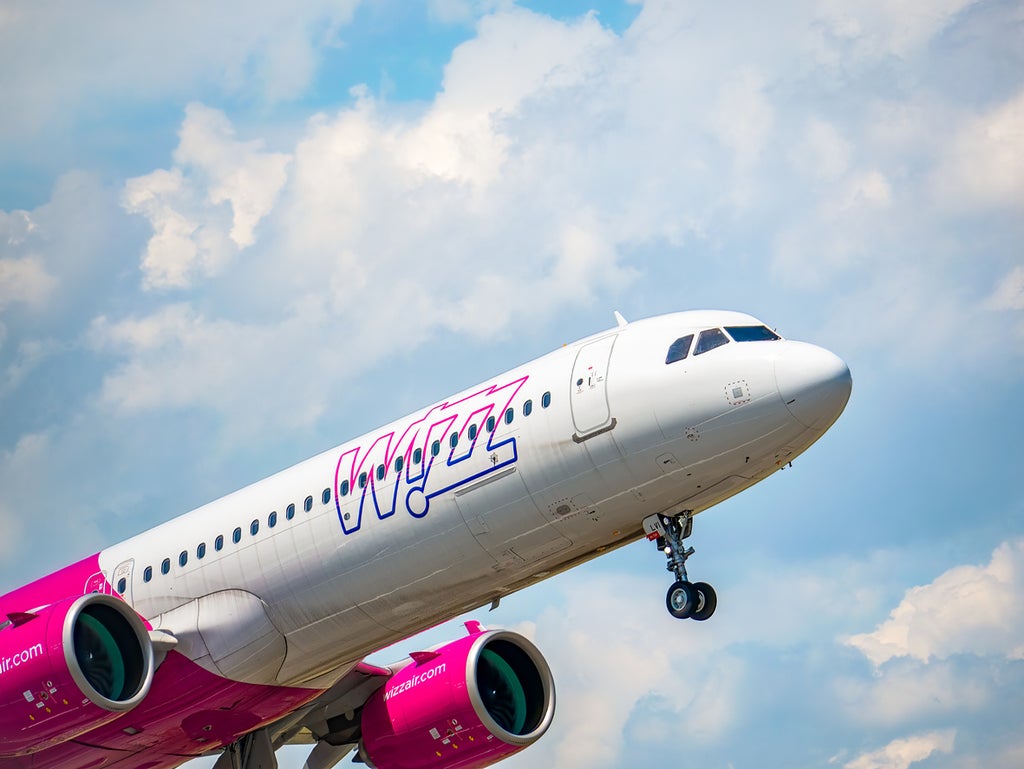
A Wizz Air flight was forced to return to its departure point on Monday after being struck by lightning while still ascending.
The Hungarian budget carrier confirmed the incident, which took place on flight W67902 on Monday evening, in a statement this morning.
“Following a lightning strike during the climb, the pilot returned to Tirana to ensure the safety of all passengers and crew on board,” said an airline spokesperson, adding that the aircraft had landed safely in Tirana.
“The safety of our passengers and crew is our top priority at all times.”
The flight had departed Albania’s Tirana airport at 5.03pm, climbing north over Thumane before turning west and heading south, bound for its destination of Abu Dhabi.
However, around 25 minutes into the flight, tracking website Flightradar24 shows the Airbus A321 neo turn back north for its departure point after flying through a lightning storm above the mountains near Rrogozhine.
“I was in the seat 3F looking out the window,” Sansrita Moitra, from India, told UAE publication The National.
“After about 20 to 30 minutes there was a thunderbolt with lightning. There was a blue-coloured light and then it turned to yellow. The whole sky lit up.
“The first thing that comes to your mind is whether you are safe or not. I didn’t see any fire. It was just lightning and a bang. It was so loud.
“It was really scary. When I looked down I could see the mountains. When it is the sea there is a chance you will survive, but if you are over a hard surface there is no chance of being saved.”
Another passenger, Mary Paulose, said it sounded like a large crack.
“Something actually lashed the aircraft,” said Ms Paulose, a staff member at The National.
“There was a bright flash along with it and a red flare from the left engine.
“It was scary but I was almost half asleep at the time as I was really tired from my trip, so it didn’t register much with me. But I heard the other passengers scream.”
Passengers said the pilot had calmly explained the situation on the aircraft speaker system, and within 15 minutes informed the plane that they would be turning back for Tirana.
“The pilot was really good, very experienced,” said Ms Moitra. “He knew what he was doing. He calmed us down.
“He said within 15 minutes there would be an emergency landing back in Tirana. We appreciated the decision because no one wanted to fly in that condition.”
Lightning strikes on planes are relatively uncommon. According to aviation website AerotimeHub, experts estimate that on average, lightning bolts hit aircraft once per year, or once per every 1,000 hours of flight time.
Strikes during ascent or descent are most common - often at an altitude of 5,000 to 15,000 feet (1,524 to 4,572 metres).
According to a 2012 Boeing report on the subject, “When commercial airplanes are struck by lightning, the result can range from no damage to serious damage that requires extensive repairs that can take the airplane out of service for an extended period of time.”
If a lightning bolt does strike a plane, it typically passes from one extremity – such as the nose or the wing of the plane – to another, such as the tail, before continuing on to the ground.
In October 2015, a storm chaser in Australia captured the extraordinary moment when a Qantas aircraft came in to land during a lightning storm in Sydney.
Photographs and video footage posted to social media by Sydney-based Daniel Shaw showed what he described as a “close call” for the jet, flying by large forks of lightning.
Meanwhile in July 2014, an easyJet flight carrying 154 passengers was forced to make an emergency landing on when one of its planes was struck by lightning just minutes before landing.
Passengers travelling from Bristol to Barcelona were left “screaming and crying” after the bolt struck the Airbus A319-111 with a “massive” bang as it flew over Barcelona, causing it to shake.
The aircraft was able to land safely after diverting to Spain’s Reus airport.







